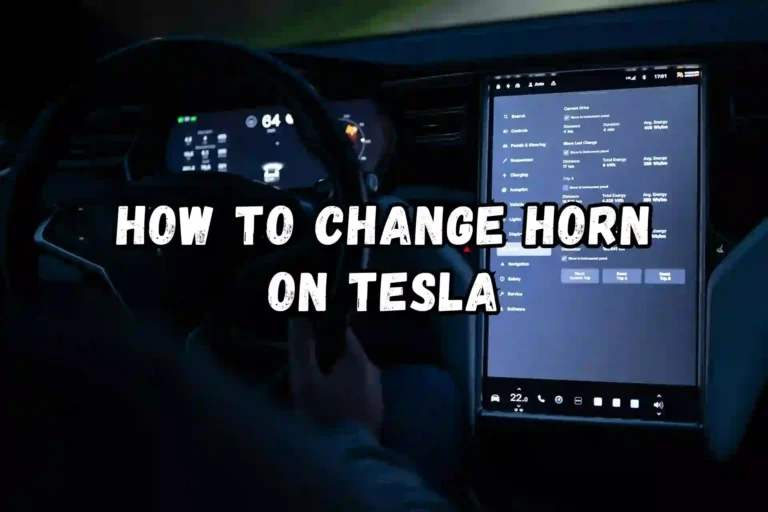With intuitive controls and advanced technological features, driving a Tesla is generally a pleasant experience. This pleasurable ride can quickly turn into one filled with concern and frustration when your tesla steering wheel hard to turn.
Throughout this post, we examine the multifaceted reasons behind the issue of a hard-to-turn steering wheel in Teslas, investigate possible solutions, and provide guidance on when to seek professional assistance to ensure your Tesla continues to offer its safe, smooth driving experience.
Understanding Power Steering Systems in Teslas
Unlike traditional cars, Tesla’s advanced electric vehicles employ electric steering systems that are predominantly powered by electricity rather than hydraulics. Motors, sensors, and control units make up the electric power steering system (EPS), which makes steering near-effortless and provides a comfortable, responsive driving experience.
The Mechanism of Electric Power Steering (EPS)
The electric motor used in electric power steering is powered by the vehicle’s battery. The motor is connected to either the steering column or the steering gear. Whenever you turn the steering wheel, sensors detect the force and direction of your input, relaying this information to a control unit, which delivers the appropriate level of assistance to the motor, so you can turn it more easily.
Potential Causes of Difficult Steering in Tesla Vehicles

There are a number of possible reasons why your Tesla’s steering wheel is hard to turn, ranging from simple maintenance issues to more complex electronic problems.
Low Tire Pressure
A low tire pressure is one of the most common causes of a heavy steering wheel. The handling and performance of a vehicle can be affected significantly by this. It is important to keep an eye on your tire pressure regularly when driving a Tesla vehicle, which comes equipped with a Tire Pressure Monitoring System (TPMS).
Wheel Alignment Issues
The steering wheel can also feel stiff when the wheels are misaligned. Vehicle alignments can be affected by general wear and tear over time. Your steering wheel may be abnormally hard to turn at lower speeds if the wheels are not aligned properly.
Power Steering Motor Malfunction
Since the Tesla utilizes an electric power steering system, it is crucial to maintain the motor’s health. It is possible for this motor to malfunction, causing the wheel to turn more slowly or some times steering wheel vibration.
Steering Rack Failures
Within the EPS system, the steering rack plays a crucial role. In order to turn the wheels, it converts rotational motion of the steering wheel into linear motion. A stiff steering wheel can be caused by issues with the steering rack, such as wear or damage.
Electric Power Steering Control Unit Issues
Control units are the brains of EPS systems. A broken power assist system may result in a steering wheel that is difficult to turn if it doesn’t work properly.
Software Glitches
It is well known that Tesla vehicles rely heavily on sophisticated software to perform a variety of functions. Power steering issues can sometimes be caused by software glitches. Some of these issues can be resolved by resetting the vehicle or updating the software.
Diagnosing a Hard-to-Turn Steering Wheel in Teslas
There are several diagnostic steps involved in determining the cause of a hard-to-turn steering wheel in a Tesla. To investigate and address possible issues, follow these steps:
Checking Tire Pressure
1. Check tire pressure using the TPMS display on the vehicle.
2. Inflate all tires according to the manufacturer’s recommendations.
3. Monitor closely to ensure there is no continued loss of pressure that may indicate a puncture or leak if tire pressure is low.
Evaluating Wheel Alignment
1. Pay attention to uneven tire wear, which may indicate alignment problems.
2. If your car pulls to one side when driving on a straight, level road, consider having your wheel alignment checked by a professional.
Inspecting the Power Steering System

When this happens, it’s prudent to schedule an appointment with a Tesla Service Center or qualified technician who can:
1. Inspect the power steering motor and control unit for signs of malfunction or wear.
2. Diagnose any electronic or mechanical problems with the EPS system.
Software Checks and Updates
1. Make sure your vehicle’s software is up-to-date, as updates can sometimes fix power steering issues.
2. Reset the steering system if recommended by Tesla or experienced technicians, especially if recent software updates or glitches have affected steering.
Professional Solutions and Preventative Maintenance
It may be necessary to consult a Tesla Service Center or an expert who has experience working on electric power steering systems when addressing a stiff steering wheel in a Tesla.
When to Seek Professional Help
It’s important to have your Tesla inspected by professionals if you’ve gone through the basic checks and found no obvious causes, or if there’s a fault with the power steering system. To diagnose the exact cause of steering difficulty, Tesla Service Centers have the necessary diagnostic tools.
Preventative Maintenance Tips
Regular preventive measures can help mitigate power steering issues in your Tesla:
1. Make sure your tires are properly inflated by checking them monthly and before long trips.
2. Examine the tires and wheels of your vehicle on a regular basis.
3. Make sure the vehicle’s software is up to date, as updates can improve or fix power steering functions.
In order to ensure your experience behind the wheel remains flawless and trouble-free, you need to understand the possible reasons behind a Tesla steering wheel that is hard to turn and take the necessary diagnostic and preventative measures. Maintaining your Tesla’s exceptional driving dynamics begins with keeping an eye on tire pressure, knowing wheel alignment, and understanding its electric power steering system.
Frequently Asked Questions
1. Why is the Tesla steering wheel hard to turn?
In some cases, it may be difficult to turn the Tesla steering wheel for a variety of reasons. Power steering problems are a common cause. In Tesla vehicles, it may be caused by low power steering fluid, faulty power steering pumps, or faulty electric power steering systems.
2. Why is my steering wheel hard when I try to turn?
A problem with the steering column, worn-out steering linkage, or lack of lubrication could cause difficulty turning the steering wheel. To identify the exact cause of the problem, have your vehicle inspected by a qualified technician.
3. What is the steering issue with Tesla?
There have been some steering-related problems reported by Tesla owners. Some of these issues include a stiff steering wheel, a heavy steering feel, or a slight delay in steering response. Different factors can cause these problems, such as electrical malfunctions, software glitches, or mechanical problems.
4. Does Tesla have steering fluid?
Unlike traditional hydraulic power steering systems, Tesla vehicles do not require steering fluid to operate. The steering system is powered by electricity instead. Electric motors assist with steering, making this system more sustainable and efficient than hydraulics.
5. How can I resolve the hard steering wheel issue in my Tesla?
It is best to consult a Tesla service center or authorized technician if you are experiencing hard steering wheel problems. Any steering-related issue in your Tesla can be diagnosed and resolved by them with the necessary equipment and expertise.
6. Can a low battery cause the steering wheel to be hard to turn in a Tesla?
The steering wheel in a Tesla does not become hard to turn due to a low battery. Even if the battery charge in Tesla vehicles is low, the power steering assistance should still function.
7. Are there any software updates to fix the Tesla steering wheel hardness issue?
There are regular software updates from Tesla that address a variety of issues, including steering-related issues. If there is a software bug or glitch causing the steering wheel to be hard to turn, a software update may resolve the issue. It is recommended that you keep your Tesla’s software up-to-date.
8. Can extreme cold weather impact the Tesla steering wheel’s performance?
Various vehicle components, including the steering system, can be adversely affected by extreme cold weather conditions. The steering wheel may feel harder to turn when the steering lubrication stiffens in extremely low temperatures. During severe cold weather, you should warm up your Tesla or park it in a heated garage.
9. How much does it cost to fix a hard steering wheel issue in a Tesla?
It depends on the underlying cause of the problem how much it will cost to fix a hard steering wheel issue in a Tesla. Repair costs may be minimal or even free if the issue is covered under warranty. To get an accurate estimate for specific repairs, it is advisable to consult a Tesla service center if the warranty has expired.
10. Can I still drive my Tesla if the steering wheel is hard to turn?
The steering wheel of a Tesla should not be hard to turn if it is hard to turn. You may be unable to control the vehicle if you have difficulty turning the steering wheel, especially in emergency situations. Before driving your Tesla again, you should have a qualified technician inspect and resolve the issue.







